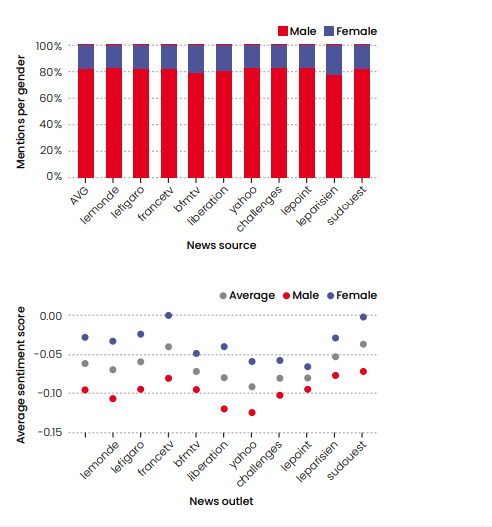
Developed as part of the BOOM (ANR) and AI4Media (Horizon 2020) projects, this innovative tool merges advanced language processing—including entity detection, theme analysis, and politician-centered sentiment classification—with political knowledge databases. It offers granular insights into media coverage, both traditional and social, including editorial biases, thematic framing, the evolving portrayal of public figures, and demographic biases.
When applied to French and Flemish (Belgium) media ecosystems, a pattern emerged: a persistent gender imbalance in political news, with women significantly underrepresented. Still, the average sentiment associated with female politicians was more positive than that of their male counterparts.

Current research priorities now focus on four fronts: (1) quantifying selection bias to spotlight underrepresented perspectives on specific topics or events; (2) broadening sentiment analysis to include entities beyond politicians; (3) extending the framework to socially impactful areas; and (4) embedding the methodology into recommendation algorithms to diversify political news feeds—a critical step toward mitigating algorithmic polarization.
of French people get their news via social media*
Automated news characterization is a useful tool for navigating the complexity of opinions expressed in the press.
The tool provides journalists with an analysis that combines objective and subjective perspectives in news articles.